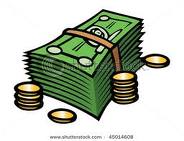 With oil and petrol prices hitting all time high, I think it’s appropriate that each of us learn to make good use of every penny that we pay the gas/petrol station to get our tanks filled. Here are a few tips to get you started.
With oil and petrol prices hitting all time high, I think it’s appropriate that each of us learn to make good use of every penny that we pay the gas/petrol station to get our tanks filled. Here are a few tips to get you started.
Do not pump full tank of petrol
Many of us are not aware that the petrol kiosk pump has a return pipe-line. When the petrol tank (in the car) reaches full level, there is a mechanism to trigger off the pump latch and at the same time a return-valve is opened (at the top of the pump station) to allow excess petrol to flow back in to the sump. But the return petrol has already pass through the meter, meaning you are donating the petrol back to SHELL/ PETRONAS/ CALTEX/MOBIL………..
1. Fill up your car or truck in the morning
Morning is when the temperature is still cool. Remember that all service stations have their storage tanks buried below ground; and the colder the ground, the denser the gasoline. When it gets warmer gasoline expands, so if you’re filling up in the afternoon or in the evening, what should be a gallon is not exactly a gallon. In the petroleum business, the specific gravity and temperature of the fuel (gasoline, diesel, jet fuel, ethanol and other petroleum products) are significant. Every truckload that we load is temperature-compensated so that the indicated gallonage is actually the amount pumped. A one-degree rise in temperature is a big deal for businesses, but service stations don’t have temperature compensation at their pumps.
2. Do not buy gas when a tanker truck is filling the station’s tank
Most likely dirt and sludge in the tank is being stirred up when gas is being delivered, and you might be transferring that dirt from the bottom of their tank into your car’s tank.
3. Fill up when your gas tank is half-full (or half-empty)
Because the more gas you have in your tank the less air there is and gasoline evaporates rapidly, especially when it’s warm. (Gasoline storage tanks have an internal floating ‘roof’ membrane to act as a barrier between the gas and the atmosphere, thereby minimizing evaporation).
4. Pump Slowly!
If you look at the trigger you’ll see that it has three delivery settings: slow, medium and high. When you’re filling up do not squeeze the trigger of the nozzle to the high setting. You should be pumping at the slow setting, thereby minimizing vapors created while you are pumping.
Hoses at the pump are corrugated; the corrugations act as a return path for vapor recovery from gas that already has been metered. If you are pumping at the high setting, the agitated gasoline contains more vapor, which is being sucked back into the underground tank, so you’re
getting less gas for your money.
5. Do not top off your gas tank
when the pump shuts off, do not keep trying to add more gas. In fact, you may be doing the next customer in line a favor by leaving some gas for them, for free. The gas you pump stays in the hose and never makes it to your tank.
Although this post was extracted from a chain email that my friends sent through, it does make sense and sound logic in an engineering point of view.
yowchuan says
Hey, you forgot “CAR POOL”!
But I realize Malaysian’s are not a very car-poolish lot. In majority of the traffic jams, you usually see one person to one car…a sad sight, but I have to attribute this to the lousy public transport system we have here in Malaysia.
me says
What a load of crap! Follow all these suggestion for a whole year and if your lucky you may have saved enough to reward yourself with a small bar of chocolate. Of course if you spent your time at work instead of wasting it pumping gas at the slowest possible rate then I’m sure you would be even more fiscally secure.